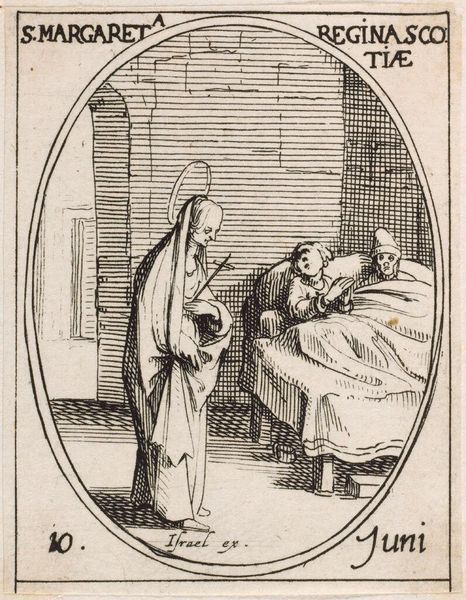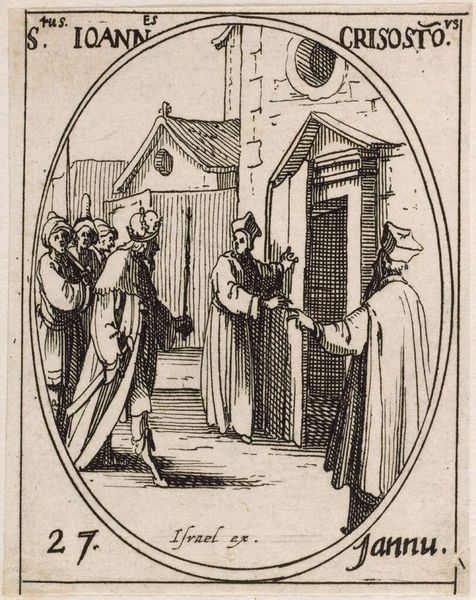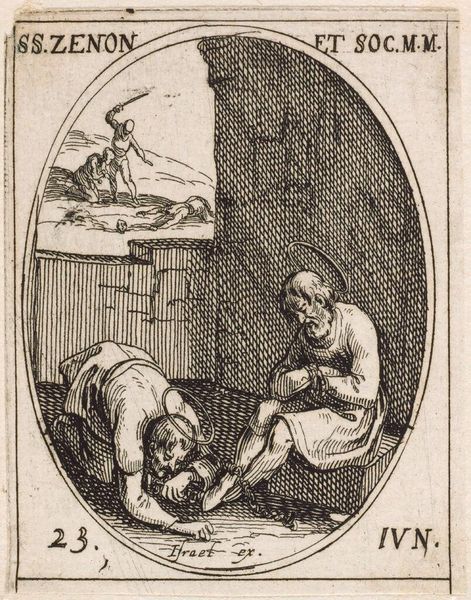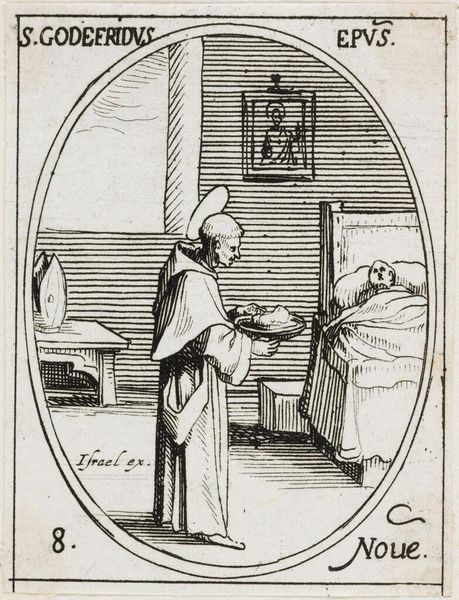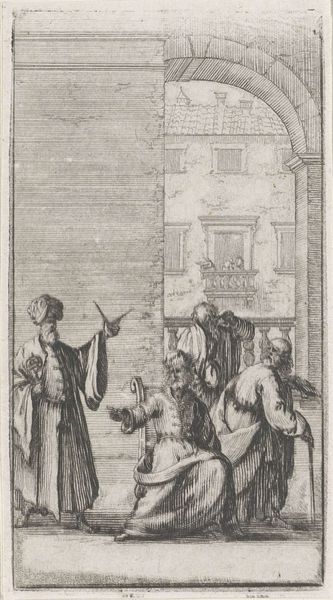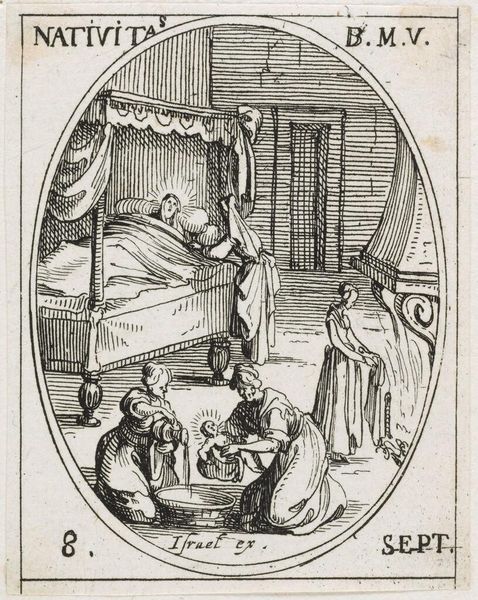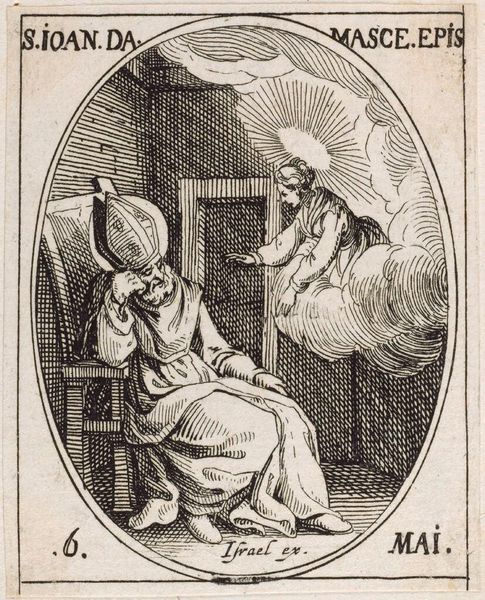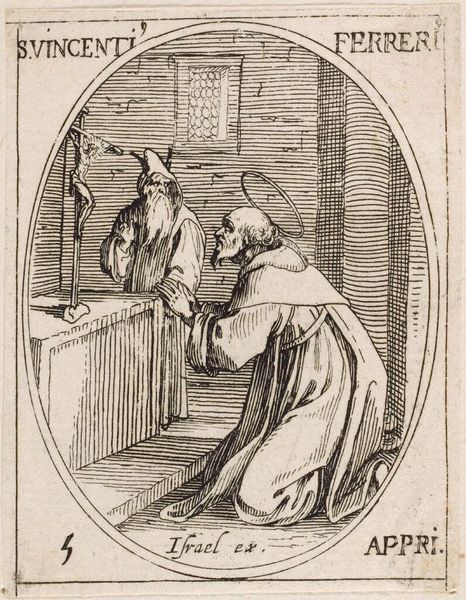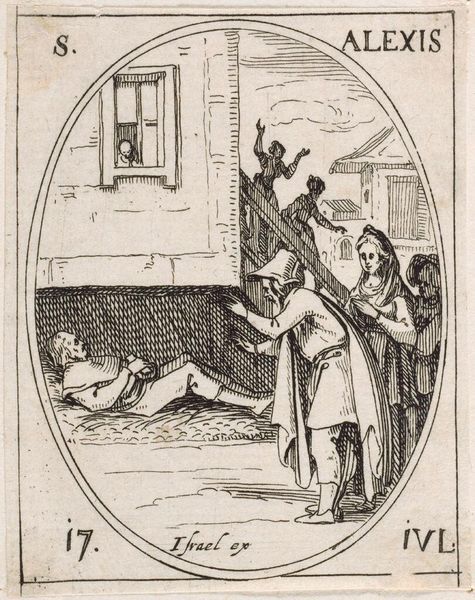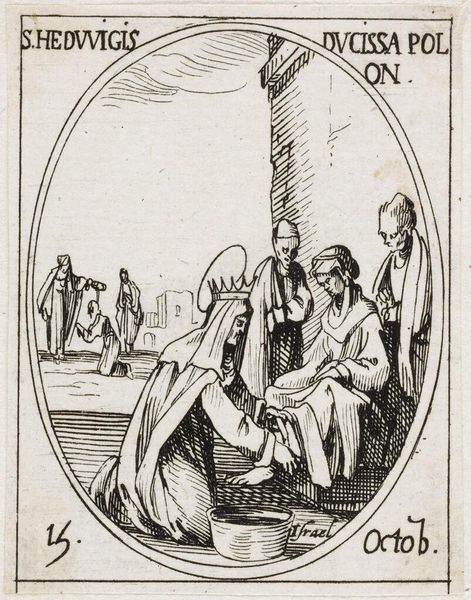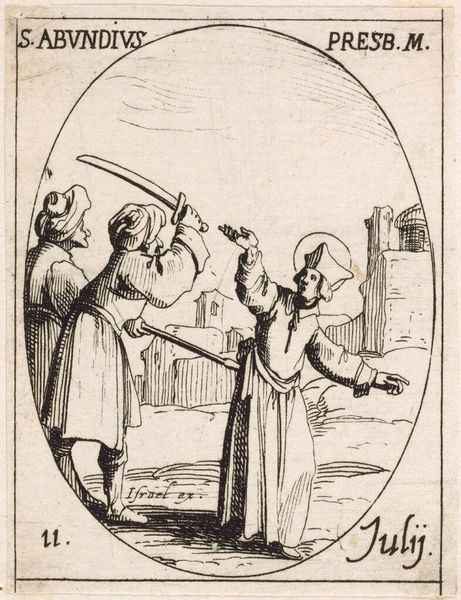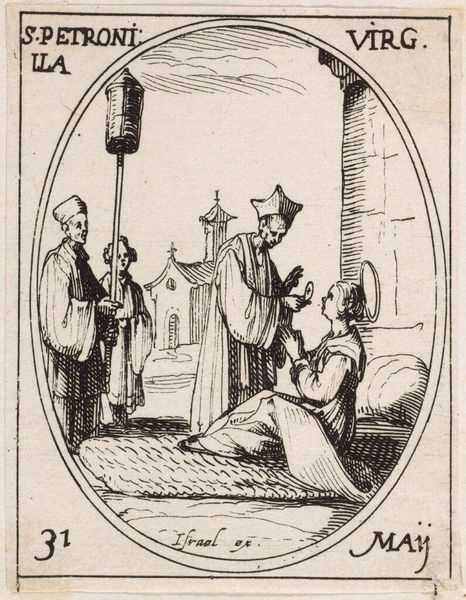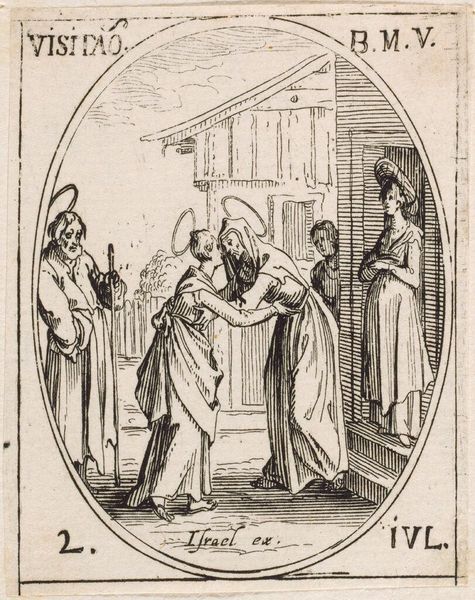
Dimensions: 7.6 x 4.9 cm (3 x 1 15/16 in.)
Copyright: CC0 1.0
Curator: This etching by Jacques Callot, a 17th-century artist, depicts "Saint John Calybitus." It’s currently held in the Harvard Art Museums. Editor: It feels like a very intimate moment, despite the rather public setting, almost theatrical. The black and white etching really underscores the gravity. Curator: Indeed, the theatricality echoes Baroque sensibilities. Callot uses line work to emphasize the drama, the scene almost staged for maximum emotional impact. We see John, on what seems to be his deathbed, surrounded by those who discovered his true identity. Editor: It’s fascinating how Callot renders fabric. The robes, sheets – they speak volumes about status, about the performative aspects of piety in that era. Note the child in the corner praying. Curator: The child’s posture represents innocence, perhaps a contrast to the older figures now recognizing the saint’s profound humility. The symbols used here suggest the recognition of Saint John's holiness, even in his assumed anonymity. Editor: It's quite a scene to unpack, a reminder of the powerful role of art in communicating religious and social ideals. Curator: Exactly, and that is what makes Callot such an intriguing figure to examine in the context of religious imagery.
Comments
No comments
Be the first to comment and join the conversation on the ultimate creative platform.
